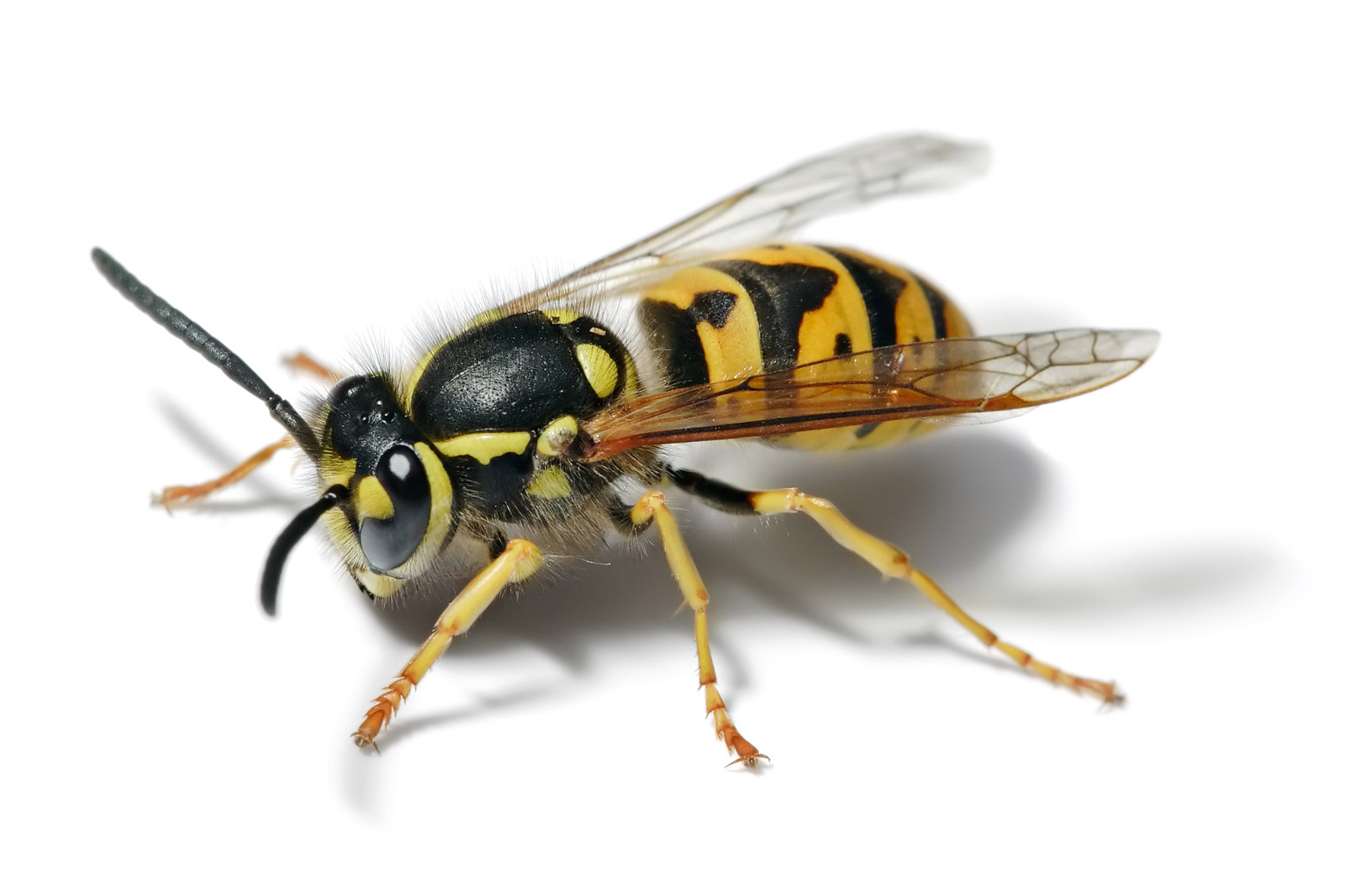All About German Yellow Jackets
German Yellow Jackets (Vespula germanica) are aggressive social wasps known for their painful stings and troublesome nests. Effective control and management are crucial to avoid stings and prevent nests from becoming larger and more problematic.
What are German Yellow Jackets?
German Yellow Jackets are a species of wasp with the scientific name Vespula germanica. Commonly known as German wasps, they are distinguished by their distinctive yellow and black markings.
These wasps are social insects that live in colonies and are known for their aggressive behavior, especially when their nests are threatened. They are most active in late summer and early fall.
How to Identify Bald-faced Hornets
Appearance:
- Size: Approximately 12-17 mm in length.
- Color: Yellow and black striped abdomen.
- Body Shape: Slightly more rounded compared to other stinging insects
- Wings: Transparent.
- Legs: Yellow
Similar Pests: German Yellow Jackets can be confused with other yellow jacket species and paper wasps. They differ from paper wasps by having a more robust body and a distinctively patterned abdomen.
Activity and Seasonality
Active Seasons: German Yellow Jackets are most active from late summer to early fall, when their colonies are at their peak. They become increasingly aggressive during this time as they prepare for the winter.
Lifecycle: The lifecycle includes four stages: egg, larva, pupa, and adult. The queen starts a new nest in the spring, and by late summer, the colony reaches its maximum size before the old queen and males die off in the fall.
Where to Find German Yellow Jackets in or Around Your House
Common Habitats: German Yellow Jackets build their nests in sheltered locations such as wall cavities, attic spaces, or underground. Outside, they often nest in soil or in hidden spaces.
Specific Hiding Spots: Look for nests in areas with minimal disturbance such as under eaves, in dense shrubs, or in hidden corners of attics. Their nests are typically covered with a papery material and are often spherical.
How to Get Rid of German Yellow Jackets
Immediate Action: If you spot a German Yellow Jacket nest, avoid disturbing it. Wear protective clothing and use a wasp spray specifically designed for yellow jackets.
Professional Treatments: Pest control professionals can offer effective treatments, including nest removal and insecticidal treatments that ensure the colony is fully eradicated.
DIY Methods: Homeowners can use commercially available traps, baits, or sprays. Ensure you follow all safety instructions and avoid provoking the wasps.
How to Prevent German Yellow Jackets
Preventive Measures:
- Seal cracks and gaps in building exteriors.
- Keep outdoor garbage bins tightly closed and clean.
- Avoid leaving food and sugary drinks exposed outdoors.
- Regularly inspect and maintain areas where yellow jackets might build nests.
Home Maintenance:
- Ensure that vents, eaves, and rooflines are properly sealed.
- Trim back vegetation near the house to reduce nesting sites.
- Regularly check for signs of nests around the home, especially in late summer and fall.
Long-term Strategies:
- Install yellow jacket traps around the home to catch foraging workers.
- Use deterrent sprays or substances near entry points and potential nesting areas.
- Schedule regular pest control inspections to proactively address potential problems.
Professional Assistance:
- Contact a pest control expert for comprehensive inspection and treatment options.
Conclusion
German Yellow Jackets are aggressive pests that require careful management. Understanding their behavior and taking preventive measures can help minimize infestations and protect your home.
If you’re dealing with a German Yellow Jacket infestation, contact Pest Control Consultants today for a free consultation and effective treatment plan. Our experts at Pest Control Consultants are here to help you keep your home safe and pest-free.
